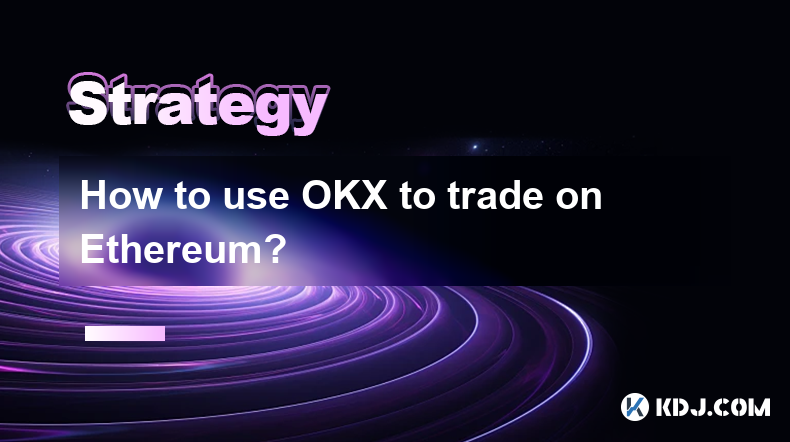-
 Bitcoin
Bitcoin $87,138.6549
3.45% -
 Ethereum
Ethereum $1,630.6301
3.37% -
 Tether USDt
Tether USDt $0.9999
0.02% -
 XRP
XRP $2.1240
3.87% -
 BNB
BNB $602.7013
2.07% -
 Solana
Solana $139.6766
1.06% -
 USDC
USDC $0.9999
0.02% -
 Dogecoin
Dogecoin $0.1617
5.47% -
 TRON
TRON $0.2432
-0.25% -
 Cardano
Cardano $0.6428
4.75% -
 Chainlink
Chainlink $13.4950
4.04% -
 UNUS SED LEO
UNUS SED LEO $9.4545
1.03% -
 Avalanche
Avalanche $20.5863
6.23% -
 Stellar
Stellar $0.2598
7.69% -
 Toncoin
Toncoin $3.0197
1.67% -
 Shiba Inu
Shiba Inu $0.0...01264
3.99% -
 Sui
Sui $2.2650
7.98% -
 Hedera
Hedera $0.1713
5.99% -
 Bitcoin Cash
Bitcoin Cash $340.6319
2.17% -
 Polkadot
Polkadot $3.9095
1.97% -
 Litecoin
Litecoin $80.7078
6.42% -
 Hyperliquid
Hyperliquid $17.8959
2.22% -
 Bitget Token
Bitget Token $4.4759
1.24% -
 Dai
Dai $1.0000
0.00% -
 Ethena USDe
Ethena USDe $0.9992
0.01% -
 Pi
Pi $0.6342
1.85% -
 Monero
Monero $216.1510
1.12% -
 Uniswap
Uniswap $5.4363
4.91% -
 Pepe
Pepe $0.0...07862
7.63% -
 Aptos
Aptos $5.1607
5.19%
How to use OKX to trade on Ethereum?
To begin trading Ethereum on OKX, users must first register and open an account, ensuring enhanced security by verifying their email and phone number.
Feb 28, 2025 at 01:19 am

Key Points
- Step 1: Register and open an OKX account
- Step 2: Deposit assets into your OKX account
- Step 3: Head to the OKX Ethereum market page
- Step 4: Choose a trade type and place your order
- Step 5: Monitor your trade and manage your position
Step-by-Step Guide to Trading Ethereum on OKX
Step 1: Register and Open an OKX Account
- Visit the OKX official website.
- Click "Sign Up" and follow the instructions to create a new account.
- Verify your email address and phone number for enhanced security.
- Once your account is verified, you will be able to log in and access the trading platform.
Step 2: Deposit Assets into Your OKX Account
- Click "Deposit" on the top navigation bar.
- Select "Ethereum" from the cryptocurrency list.
- Copy your Ethereum deposit address or scan the QR code provided.
- Transfer Ethereum from your external wallet or exchange to the provided address.
- Wait for the deposit to be processed and credited to your OKX account. This may take a few minutes depending on the Ethereum network congestion.
Step 3: Head to the OKX Ethereum Market Page
- Click "Markets" on the top navigation bar.
- Select "Ethereum" from the cryptocurrency dropdown menu.
- You will be directed to the OKX Ethereum market page.
Step 4: Choose a Trade Type and Place Your Order
Spot Trading:
- Select the "Spot" tab.
- Choose whether you want to buy or sell Ethereum.
- Enter the desired amount or price.
- Click "Buy ETH" or "Sell ETH" to place your order.
Margin Trading:
- Select the "Margin" tab.
- Choose whether you want to buy or sell Ethereum.
- Enter the desired amount or price and leverage ratio.
- Click "Buy ETH" or "Sell ETH" to place your margin order.
Futures Trading:
- Select the "Futures" tab.
- Choose the desired futures contract (e.g., ETH-USD 0331 Perpetual).
- Enter the desired quantity and price.
- Click "Buy ETH" or "Sell ETH" to place your futures order.
Step 5: Monitor Your Trade and Manage Your Position
- Once your order is placed, you can monitor its status in the "Orders" section.
- You can adjust or cancel your order if necessary by clicking on the corresponding order.
- For margin and futures trades, you can manage your position by adjusting your position size, adding margin, or setting stop-loss and take-profit orders.
FAQs
Q: What are the fees for trading Ethereum on OKX?
A: OKX offers competitive trading fees, varying based on the trade type and VIP level. Spot trading fees range from 0.02% to 0.1%, while margin trading fees start from 0.03%. Futures trading fees vary depending on the contract and market conditions.
Q: How can I withdraw Ethereum from OKX?
A: To withdraw Ethereum from your OKX account:
- Click "Withdraw" on the top navigation bar.
- Select "Ethereum" from the cryptocurrency list.
- Enter the withdrawal address, amount, and payment password.
- Confirm the withdrawal.
Q: Is it safe to trade Ethereum on OKX?
A: OKX is a reputable and secure cryptocurrency exchange with robust security measures. The platform employs multi-layer security protocols, including two-factor authentication, cold storage, and regular security audits.
Disclaimer:info@kdj.com
The information provided is not trading advice. kdj.com does not assume any responsibility for any investments made based on the information provided in this article. Cryptocurrencies are highly volatile and it is highly recommended that you invest with caution after thorough research!
If you believe that the content used on this website infringes your copyright, please contact us immediately (info@kdj.com) and we will delete it promptly.
- Decentraland (MANA) Price Soars 10% to Two-Month High of $0.31, Bullish Trend May Extend Rally
- 2025-04-21 19:00:13
- AI Activity Data from Phoenix Group Indicates Strong Engagement for Injective ($INJ), Fetch.ai ($FET), and $ARC
- 2025-04-21 19:00:13
- Solana (SOL) Price Prediction: Will the Whale Buy the Dip and Spark a New Bull Market?
- 2025-04-21 18:55:14
- JUP, the native token of Jupiter exchange, is on the move
- 2025-04-21 18:55:14
- BingX Lists EPT, the Native Token for Balance.fun, on Its Spot Market and Xpool
- 2025-04-21 18:50:13
- Ethereum Gas Fee Drops to Record Lows, Average Transaction Now Costs Only $0.01
- 2025-04-21 18:50:13
Related knowledge

What to do if SHIB's HODL wave indicator shows loose chips?
Apr 21,2025 at 03:07pm
If the SHIB's HODL wave indicator shows loose chips, it suggests that a significant portion of the SHIB holders are selling their tokens, potentially leading to increased volatility and a possible price drop. Understanding how to navigate this situation is crucial for any SHIB investor. This article will guide you through the steps to take when you noti...

Is it a risk that SHIB's derivatives position is 3 times that of the spot?
Apr 20,2025 at 12:35am
Is it a risk that SHIB's derivatives position is 3 times that of the spot? The cryptocurrency market is known for its volatility and high-risk nature, and Shiba Inu (SHIB) is no exception. One of the metrics that traders and investors closely monitor is the ratio of derivatives to spot positions. SHIB's derivatives position being three times that of the...

What does SHIB's Cardano coefficient below 0.3 indicate?
Apr 19,2025 at 08:00am
What does SHIB's Cardano coefficient below 0.3 indicate? The Cardano coefficient, often used within the cryptocurrency community, is a metric that helps investors and analysts understand the correlation between different cryptocurrencies. When it comes to SHIB (Shiba Inu) and its Cardano coefficient falling below 0.3, this indicates a relatively low cor...

Is SHIB's TVL suddenly increasing by 20% a positive signal?
Apr 20,2025 at 08:07am
The sudden increase of SHIB's TVL (Total Value Locked) by 20% has sparked a lot of interest and speculation within the cryptocurrency community. TVL is an important metric that represents the total amount of assets locked in a DeFi protocol, indicating the level of user engagement and trust in the platform. In this article, we will explore whether this ...

What does SHIB's exchange inventory ratio hit a new low mean?
Apr 21,2025 at 02:50am
The term 'exchange inventory ratio' refers to the percentage of a cryptocurrency's total supply that is held on exchanges. When we say that SHIB's exchange inventory ratio hit a new low, it means that the proportion of Shiba Inu (SHIB) tokens held on cryptocurrency exchanges has reached its lowest point in a given period. This metric is significant beca...

Should SHIB's MVRV ratio break through 5 and stop profit in batches?
Apr 20,2025 at 11:35pm
The MVRV (Market Value to Realized Value) ratio is a key metric used in the cryptocurrency market to assess whether a particular asset is overvalued or undervalued. For Shiba Inu (SHIB), a popular meme coin, understanding the implications of its MVRV ratio breaking through the 5 threshold is crucial for investors looking to manage their portfolios effec...

What to do if SHIB's HODL wave indicator shows loose chips?
Apr 21,2025 at 03:07pm
If the SHIB's HODL wave indicator shows loose chips, it suggests that a significant portion of the SHIB holders are selling their tokens, potentially leading to increased volatility and a possible price drop. Understanding how to navigate this situation is crucial for any SHIB investor. This article will guide you through the steps to take when you noti...

Is it a risk that SHIB's derivatives position is 3 times that of the spot?
Apr 20,2025 at 12:35am
Is it a risk that SHIB's derivatives position is 3 times that of the spot? The cryptocurrency market is known for its volatility and high-risk nature, and Shiba Inu (SHIB) is no exception. One of the metrics that traders and investors closely monitor is the ratio of derivatives to spot positions. SHIB's derivatives position being three times that of the...

What does SHIB's Cardano coefficient below 0.3 indicate?
Apr 19,2025 at 08:00am
What does SHIB's Cardano coefficient below 0.3 indicate? The Cardano coefficient, often used within the cryptocurrency community, is a metric that helps investors and analysts understand the correlation between different cryptocurrencies. When it comes to SHIB (Shiba Inu) and its Cardano coefficient falling below 0.3, this indicates a relatively low cor...

Is SHIB's TVL suddenly increasing by 20% a positive signal?
Apr 20,2025 at 08:07am
The sudden increase of SHIB's TVL (Total Value Locked) by 20% has sparked a lot of interest and speculation within the cryptocurrency community. TVL is an important metric that represents the total amount of assets locked in a DeFi protocol, indicating the level of user engagement and trust in the platform. In this article, we will explore whether this ...

What does SHIB's exchange inventory ratio hit a new low mean?
Apr 21,2025 at 02:50am
The term 'exchange inventory ratio' refers to the percentage of a cryptocurrency's total supply that is held on exchanges. When we say that SHIB's exchange inventory ratio hit a new low, it means that the proportion of Shiba Inu (SHIB) tokens held on cryptocurrency exchanges has reached its lowest point in a given period. This metric is significant beca...

Should SHIB's MVRV ratio break through 5 and stop profit in batches?
Apr 20,2025 at 11:35pm
The MVRV (Market Value to Realized Value) ratio is a key metric used in the cryptocurrency market to assess whether a particular asset is overvalued or undervalued. For Shiba Inu (SHIB), a popular meme coin, understanding the implications of its MVRV ratio breaking through the 5 threshold is crucial for investors looking to manage their portfolios effec...
See all articles






















































































